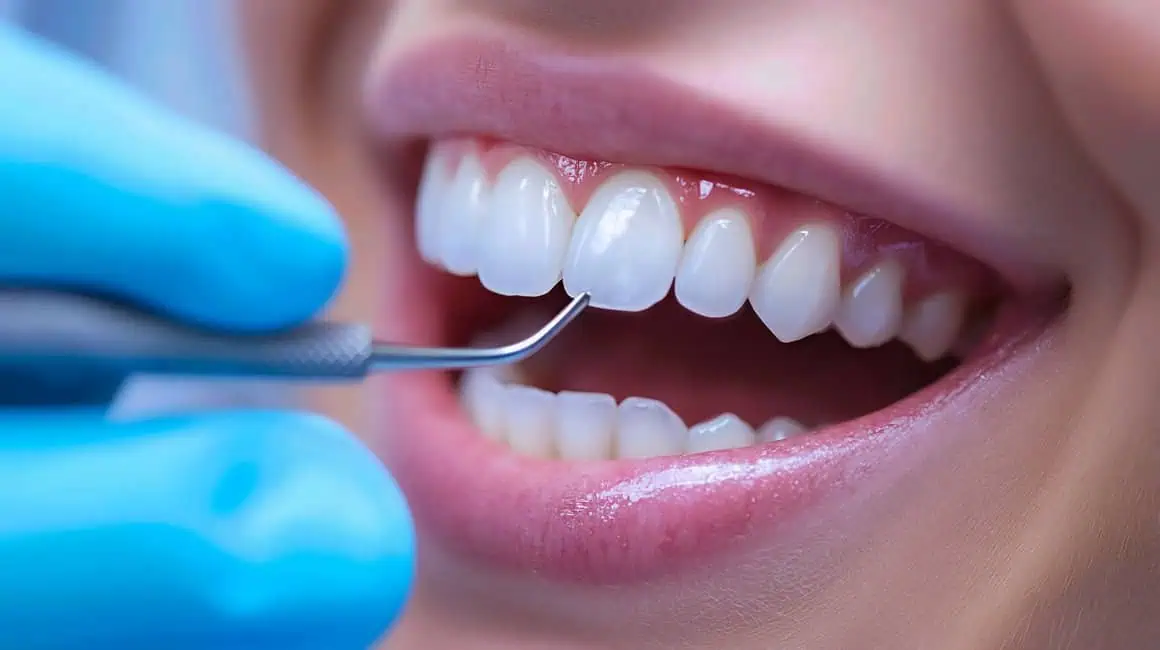
Introduction
A straight, aligned smile can significantly boost your confidence, but dealing with minor crooked teeth doesn’t always require braces or aligners. Smile shaping, also known as tooth reshaping or dental contouring, is a non-invasive solution for minor dental imperfections like crooked teeth. Here’s what you need to know about how smile shaping works and its effectiveness in enhancing your smile.
What is Smile Shaping?
Smile shaping, or tooth contouring, is a cosmetic dental procedure that reshapes the edges of teeth to improve their overall appearance. Dentists typically use specialized tools to carefully remove small amounts of enamel, which is the outer layer of the tooth, to smooth out rough or uneven areas. The goal is to create a more symmetrical, polished look that enhances your smile.
The procedure frequently incorporates bonding, which uses tooth-colored resin to enhance shape or close gaps. As a minimally invasive procedure with instant results, smile shaping appeals to those seeking quick fixes for cosmetic dental concerns without extended recovery times.
Can Smile Shaping Fix Crooked Teeth?
Smile shaping can correct minor misalignments, but it’s important to understand its limitations. Smile Shaping is most effective for people with slightly crooked or uneven teeth. For more severe misalignments, traditional orthodontic treatments like braces or clear aligners may be necessary.
If your teeth are only mildly crooked, smile shaping can make them appear more aligned by reshaping the edges or smoothing out rough spots. It doesn’t actually move the teeth but can create the illusion of straighter teeth by making them appear more uniform.
Who is a Good Candidate for Smile Shaping?
Only some people are ideal candidates for smile shaping. The procedure is best suited for individuals with:
- Minorly Crooked Teeth: Ideal for those with slightly crooked teeth, as smile shaping can smooth out small imperfections to create a straighter appearance.
- Uneven Tooth Length: Suitable for individuals with teeth of varying lengths, as it can make them appear more uniform by reshaping the edges.
- Small Chips or Cracks: Effective for fixing minor chips or cracks by smoothing and reshaping the surface of the teeth.
- Slight Overlapping or Crowding: Can reduce the appearance of minor overlapping or crowding by contouring the outer enamel.
- Good Overall Oral Health: Candidates need healthy teeth and gums, as the procedure is only cosmetic and requires strong enamel.
- Adequate Enamel: Those with sufficient enamel are good candidates since the procedure involves removing small amounts of enamel.
- Desire for a Quick Cosmetic Fix: Ideal for those looking for immediate results without the need for braces or lengthy treatments.
Since teeth reshaping involves removing a small amount of enamel, candidates must have healthy teeth with enough enamel to safely undergo the procedure.
How Smile Shaping for Crooked Teeth Works
Smile shaping is a relatively simple and quick procedure that can often be completed in just one dental visit. Here’s what you can expect:
- Examination: Your dentist will first examine your teeth and gums to ensure you’re a suitable candidate for smile shaping. They may take X-rays to check the health and structure of your teeth.
- Contouring: Once your dentist has determined the right areas to reshape, they will use a sanding instrument to remove small amounts of enamel. This allows them to smooth out rough edges, reduce overlaps, and correct minor misalignments.
- Polishing: After reshaping your teeth, your dentist will polish them to a smooth, shiny finish. The entire process is painless and doesn’t require anesthesia since only surface enamel is removed.
- Bonding: If necessary, your dentist may apply bonding material to certain areas of your teeth to further improve their appearance or fill in gaps.
Benefits of Smile Shaping
Smile shaping offers several benefits, particularly for those with minor imperfections in their teeth. Here are some of the key advantages:
- Quick Results: Unlike braces or aligners, which can take months or even years, smile shaping delivers instant results. You’ll leave the dentist’s office with a more even, symmetrical smile.
- Non-Invasive: Since smile shaping involves removing only small amounts of enamel, it’s a minimally invasive procedure that doesn’t require any recovery time.
- Cost-Effective: Smile shaping is generally more affordable than other cosmetic dental treatments, such as veneers or braces, making it an accessible option for many patients.
- Pain-Free: Most people experience no discomfort during smile shaping, as it doesn’t involve the deeper layers of the tooth or nerves.
- Enhances Tooth Contours: This procedure can improve the natural contours of your teeth, giving you a more refined and polished smile.
Limitations of Smile Shaping
While smile shaping offers numerous benefits, it’s important to keep in mind that it’s not a one-size-fits-all solution. Here are some limitations to consider:
- Only for Minor Corrections: Smile shaping can’t fix severely crooked teeth or significant bite issues. In these cases, orthodontic treatments like braces or clear aligners are more effective.
- Enamel Sensitivity: Since the procedure involves removing small amounts of enamel, it can sometimes increase tooth sensitivity. Your dentist will ensure that only a minimal amount is removed to avoid this issue.
- No Structural Changes: Smile shaping improves the appearance of your teeth but doesn’t correct the underlying structure. If you have functional issues like a misaligned bite, you’ll need more extensive dental treatment.
Teeth Reshaping vs. Braces or Aligners
While smile shaping is a quick fix for minor cosmetic issues, braces and aligners are designed to address more complex orthodontic problems. These treatments physically move your teeth into better alignment, correcting issues such as:
- Severely crooked or overlapping teeth
- Bite problems (overbite, underbite, etc.)
- Significant gaps between teeth
However, braces and aligners can take months or years to produce results, require frequent dental visits, and may come with discomfort and adjustment periods. Smile shaping offers a more convenient solution for those with mild misalignment who want fast results without the commitment of orthodontic treatment.
Aftercare and Maintenance
Since smile shaping removes a small amount of enamel, it’s essential to practice good oral hygiene after the procedure to protect your teeth from decay and sensitivity. Here are some tips for maintaining your results:
- Avoid Hard or Crunchy Foods: Protect your reshaped teeth from chips or cracks by avoiding hard objects and foods.
- Use a Soft-Bristle Toothbrush: Prevent enamel wear by using a soft-bristle toothbrush when cleaning your teeth.
- Maintain Good Oral Hygiene: Continue regular brushing, flossing, and dental cleanings to keep your teeth healthy after the procedure.
- Consider Fluoride Toothpaste: Using fluoride toothpaste can help strengthen your enamel and reduce sensitivity post-treatment.
- Regular Dental Check-ups: Visit your dentist regularly to monitor the condition of your teeth and ensure no further reshaping is necessary.
Conclusion: Is Smile Shaping Right for You?
Smile shaping can be an excellent solution for individuals with minor crooked teeth or other cosmetic imperfections. Kelly Smile Design offers Smile Shaping, a one-visit cosmetic procedure using ultra-conservative techniques like tooth contouring, bonding, and optional gum sculpting to quickly enhance your smile by correcting unevenness and imperfections, providing a subtle upgrade without the time or cost of traditional veneers.
Achieve a flawless, confident smile in just one visit with Smile Shaping, a quick and affordable cosmetic solution to perfect minor imperfections and enhance your natural beauty. Consult the Best Cosmetic Dentist in Chicago, IL for Teeth Contouring to complete your smile transformation.







